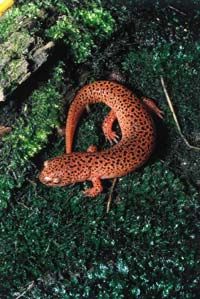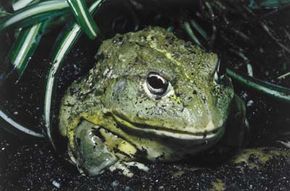Frogs and Toads, Warts and All
It's tricky to make generalizations about frogs. The world's smallest frog, the gold frog, is less than a centimeter long. Goliath frogs, the biggest frogs, are thirty times bigger -- about 12.5 inches (32 cm) long from head to tail. While many frog species are nocturnal, some are most active in the morning or afternoon. Life spans vary from species to species, although most live for a few years in the wild and a little longer in captivity. And while many frogs croak, chirp or ribbit, some species are silent.
Although many people think of frogs as green, some are orange, yellow, blue or bright pink. The texture of a frog's skin and the shape of its body and legs vary from species to species, and these are also the traits that separate frogs from toads. Frogs have smooth, glossy, moist skin and legs that are built for swimming and leaping. Toads are frogs that have bumpy, drier skin and have legs that are built for walking instead of jumping.
Advertisement

But the distinction between frogs and toads is mostly arbitrary -- some frogs look like toads, and some toads look like frogs. Toads can generally stay farther away from water, since their skin doesn't dry out as quickly as frogs' skin. But some frogs live in very dry areas and have to go to great lengths to stay hydrated, and some toads live in water.
There are even exceptions to frogs' most defining trait. Frogs are tailless. This is so central to what makes a frog a frog that their scientific order, Anura, means "without tail." This lack of a tail unites frogs, and it sets them apart from the two other orders of amphibians: salamanders and caecilians. All amphibians start their lives breathing water before developing the ability to breathe air, but only frogs grow into land animals that don't have tails.
But two frog species have tails. The coastal tailed frog, Ascaphus truei, and the mountain tailed frog, Ascaphus montanus, both have tails that match the color of their bodies. These tails are reproductive organs. Because of this appendage, tailed frogs are the only type of frog in which a male can fertilize eggs while they're still inside a female's body.
But in spite of all the differences in their appearance and behavior, all frog species have roughly the same anatomical structure.
